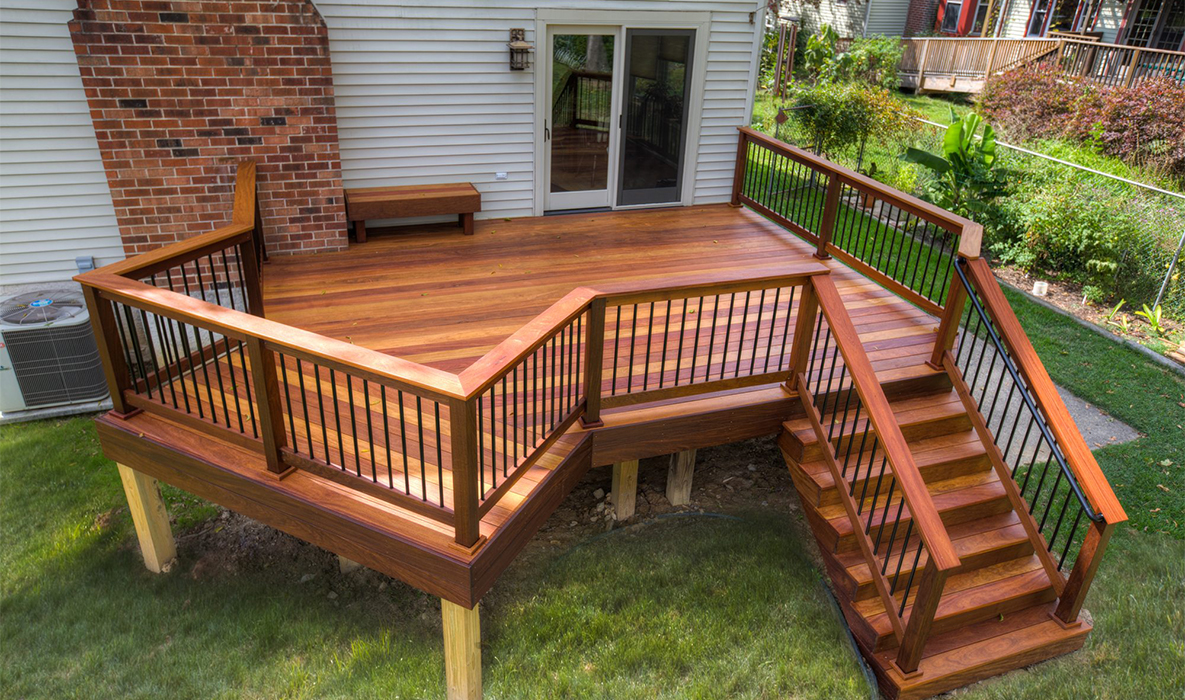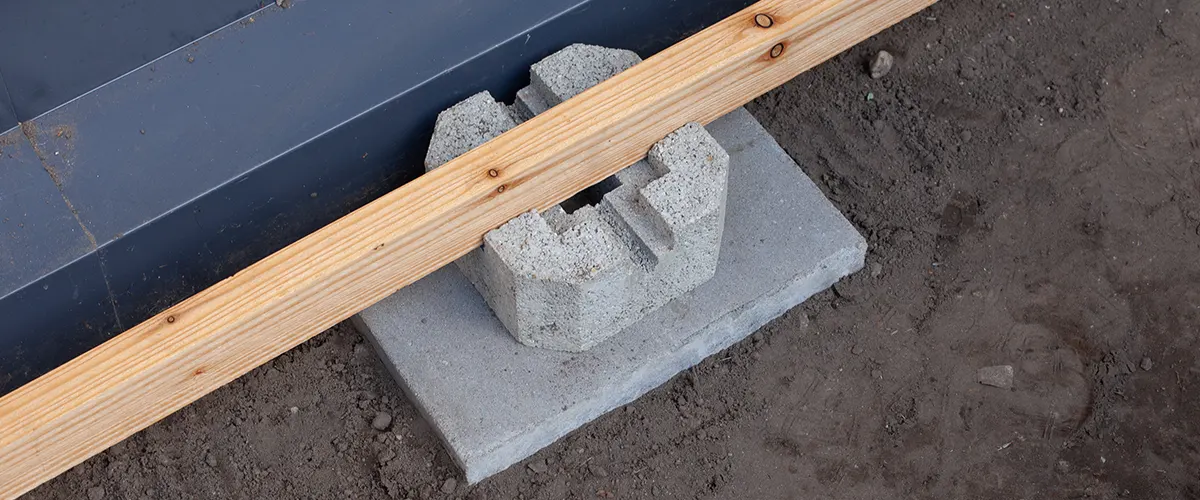Checking Out the Array of Decking Providers: Which Alternative Fits Your Outdoor Room?
One essential element in achieving this is selecting the appropriate type of outdoor decking for your exterior location. From standard wood outdoor decking to contemporary options like composite, PVC, aluminum, and also concrete outdoor decking, each alternative uses its own collection of considerations and advantages. In this discussion, we will certainly explore the selection of decking services offered, dropping light on the various materials, their cons and pros, and eventually aid you find the excellent fit for your outdoor room.
Conventional Timber Decking
Conventional timber decking is a popular choice for house owners aiming to develop a all-natural and classic outdoor room. With its classic allure and warm aesthetic, it has been a best choice for years. Wood outdoor decking supplies a variety of benefits that make it an appealing selection for outdoor spaces.
Among the main benefits of conventional wood decking is its all-natural appeal. The cozy tones and grain patterns of timber develop a visually attractive and inviting ambience. This sort of decking additionally gives a sense of credibility and connection to nature, which is highly valued by numerous homeowners.
In addition to its visual allure, timber decking is known for its toughness. High-grade wood, such as cedar or redwood, is normally resistant to rot and decay, making it a durable choice for exterior areas. Appropriate maintenance, such as normal cleaning and sealing, can additionally enhance its durability.

Composite Decking
Composite decking offers a long lasting and low-maintenance alternative to conventional timber outdoor decking for exterior areas. Made from a mix of timber fibers and recycled plastic, composite outdoor decking is created to hold up against the elements and withstand fading, bending, and decomposing. This makes it an ideal option for property owners that desire a durable and easy outdoor decking option.
One of the major advantages of composite outdoor decking is its resilience. Unlike wood outdoor decking, which can easily split, splinter, or warp with time, composite outdoor decking is crafted to be resistant to these concerns. It is likewise less vulnerable to moisture damages and insect infestation, making sure that your outdoor space remains in good problem for several years to come.
An additional advantage of composite outdoor decking is its low-maintenance nature. Unlike wood outdoor decking, which needs normal discoloration, securing, and sanding to maintain its look and protect it from the aspects, composite decking only requires periodic cleansing with soap and water. This not just saves you effort and time yet likewise reduces the general maintenance prices related to your exterior space.
In addition, composite decking comes in a wide variety of colors and finishes, enabling you to tailor the look of your outdoor space to fit your design and choices. Whether you choose a natural timber look or a much more modern-day and smooth visual, there is a composite decking choice offered to satisfy your demands.
PVC Decking
PVC outdoor decking is a innovative and long lasting option for home owners looking for a high-performance exterior decking option. PVC, or polyvinyl chloride, is an artificial material understood for its strength and stability. It is resistant to mold, mold and mildew, and rot, making it an excellent option for locations with high dampness degrees. PVC decking additionally offers enhanced protection against fading, staining, and damaging, making certain that it preserves its look over time.
One of the vital benefits of PVC outdoor decking is its low upkeep needs. Unlike conventional timber decking, PVC decking does not call for regular staining, securing, or painting. It can go to my blog be conveniently cleaned up with a mild detergent and water, saving property owners time and effort in upkeep jobs.

In addition, PVC outdoor decking is known for its durability and durability (Ogden Decks). It is developed to stand up to extreme climate condition, UV rays, and hefty foot website traffic. PVC outdoor decking is immune to warping, breaking, and splintering, ensuring that it continues to be secure and structurally sound for several years to find
Aluminum Decking
Aluminum outdoor decking is a modern and smooth alternative for house owners looking to boost their outdoor area with a durable and modern decking solution. It is acquiring appeal as a result of its many benefits and unique attributes.
Among the major benefits of light weight aluminum decking is its durability. Unlike traditional wood or composite outdoor decking, aluminum is immune to decaying, warping, and splitting. It is likewise very immune to rust and deterioration, making it excellent for outside usage in all weather.
In addition to its sturdiness, light weight aluminum decking is additionally low-maintenance. It does not call for discoloration, sealing, or painting like timber decking.
One more key feature of light weight aluminum decking is its flexibility in style. It can be tailored to fit any shape or size, allowing home owners to produce one-of-a-kind and stylish outside space. It is readily available in a range of coatings and colors, permitting unlimited layout opportunities.
Concrete Decking
Concrete outdoor decking uses a durable and functional remedy for home owners seeking to create useful and stylish outdoor areas. With its toughness and durability, concrete outdoor decking has actually come to be a prominent choice amongst homeowners who value durability and reduced upkeep.
One of the main benefits of concrete decking is its sturdiness. Additionally, concrete outdoor decking is very resistant to weather problems such as rainfall, snow, and severe temperatures, making it a trusted choice for year-round usage.
Another advantage of concrete outdoor decking is its flexibility. Concrete can be built right into different shapes and sizes, permitting Web Site countless style possibilities. It can be stamped, discolored, or tinted to imitate various other products such as wood or rock, supplying homeowners with the freedom to customize their exterior area to their wanted visual.
Furthermore, concrete decking requires marginal maintenance. Unlike wood decking that calls for routine staining and securing, concrete decking only requires occasional cleaning to maintain its look. This makes it a cost-efficient alternative over time, as homeowners can reduce maintenance expenses.
Verdict
Finally, when thinking about decking alternatives for your exterior room, it is very important to carefully review the different kinds offered. Traditional wood decking supplies a traditional and natural appearance but needs normal maintenance. Composite outdoor decking is a low-maintenance and durable option, while PVC decking provides exceptional resistance to wetness and rot. Aluminum outdoor decking is lightweight and resistant to corrosion, while concrete decking uses a durable and versatile option. Ultimately, the ideal choice will depend on your particular needs and choices.
From typical timber outdoor decking to contemporary options like composite, PVC, aluminum, and even concrete decking, each alternative provides its very own set of factors to consider and advantages.Compound outdoor decking offers a low-maintenance and resilient option to traditional timber outdoor decking for outdoor rooms. Unlike wood outdoor decking, which can conveniently split, splinter, or warp over time, composite outdoor decking is engineered to be resistant to these problems.PVC decking is a long lasting and innovative alternative for property owners seeking a high-performance outside decking service. PVC decking is readily available in a vast range of appearances, shades, and patterns, making it possible for home owners to customize their outdoor Check Out Your URL decking to match their individual choices and match their total outside style.

